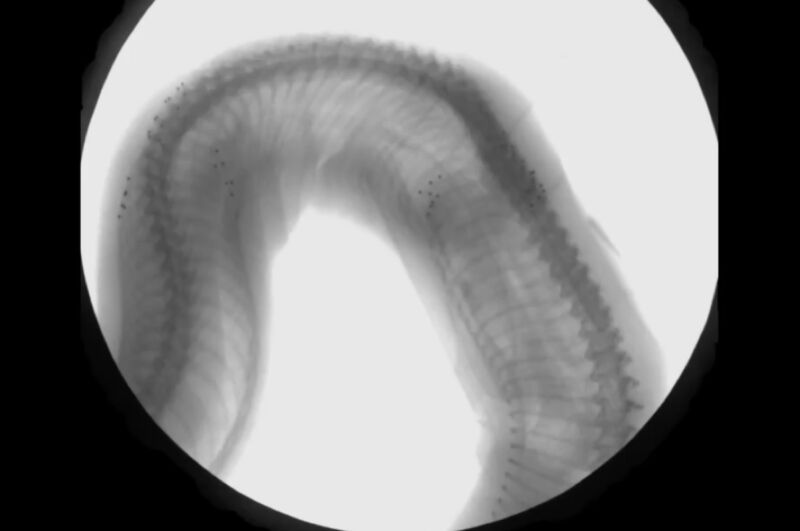
Enlarge / Brown University biologists X-rayed boa constrictors to determine how they manage to breathe while squeezing prey to death. (credit: John Capano)
Watching a boa constrictor capture and consume its prey is quite something. First, the snake strikes and latches onto the prey with its teeth, then it coils its body tightly around the poor creature and slowly squeezes the life from it. The constrictor cuts off blood flow to the heart and brain. Then the boa unhinges its jaw and swallows the prey whole. The boa uses its muscles to move its prey down the length of its body to the stomach, where the unlucky varmint is digested over the next four to six days.
Boa constrictors mostly consume various medium-sized rodents, lizards, and birds. They have also been known to chow down on even larger prey, including monkeys, wild pigs, and ocelots. Regardless of what's on the menu, how do the snakes still manage to breathe as they crush an animal to death, since that constriction also uncomfortably squeezes the boas' own ribs? Unlike mammals (including humans), boa constrictors don’t have a separate diaphragm. They rely entirely on the motion of their ribs to breathe.
Biologists at Brown University and Dickinson College conducted a series of experiments to find out more, and they described their results in a new paper published in the Journal of Experimental Biology. Boa constrictors, they discovered, have a remarkable ability to selectively use different sections of their rib cage for breathing during constriction. The reptiles essentially use the far end of their lungs as a bellows to pull in air whenever the ribs closer to the head are obstructed.
No comments:
Post a Comment